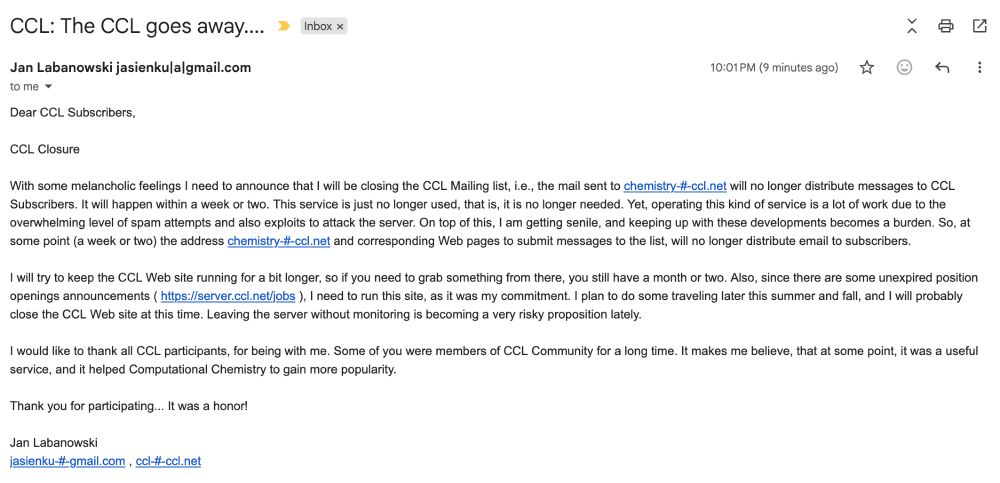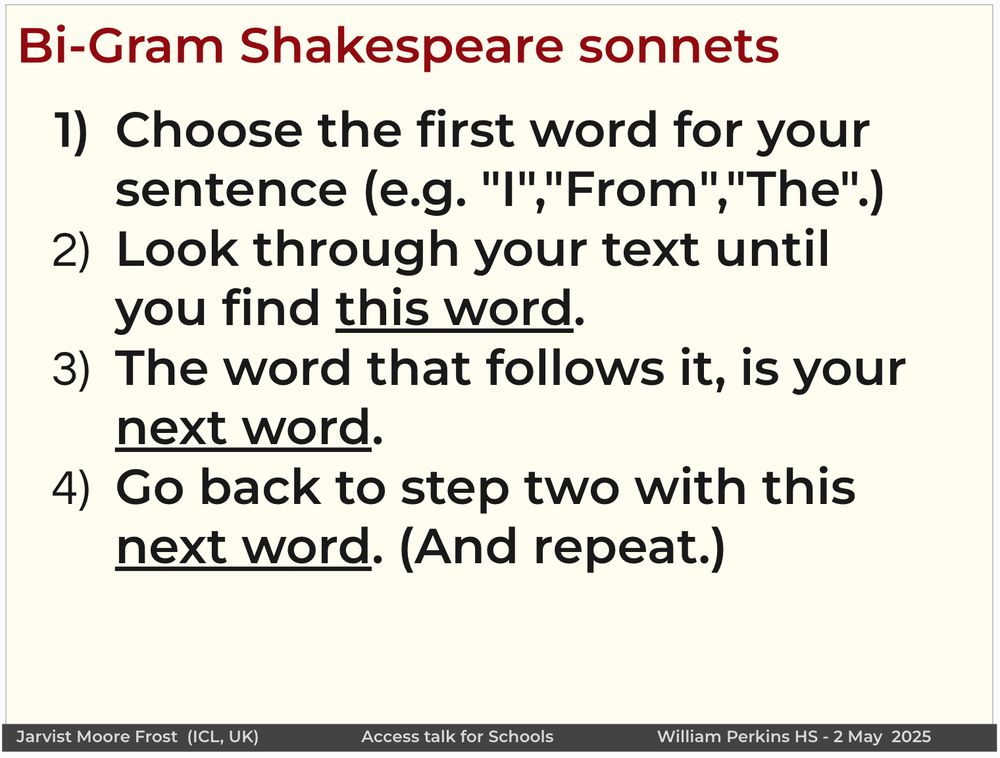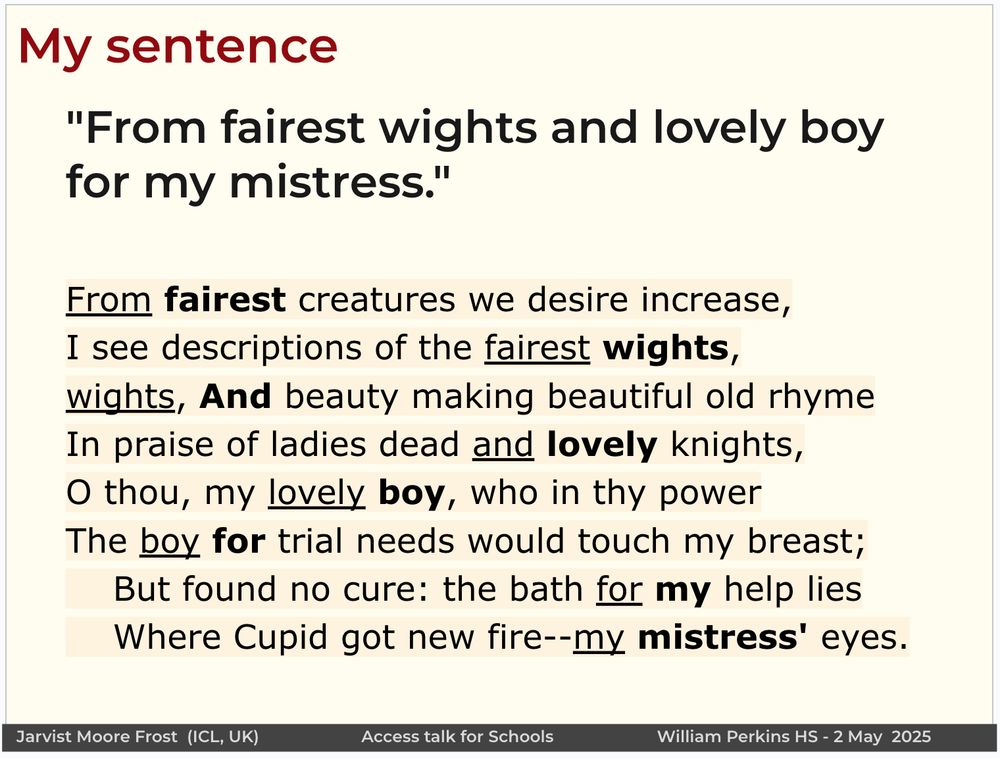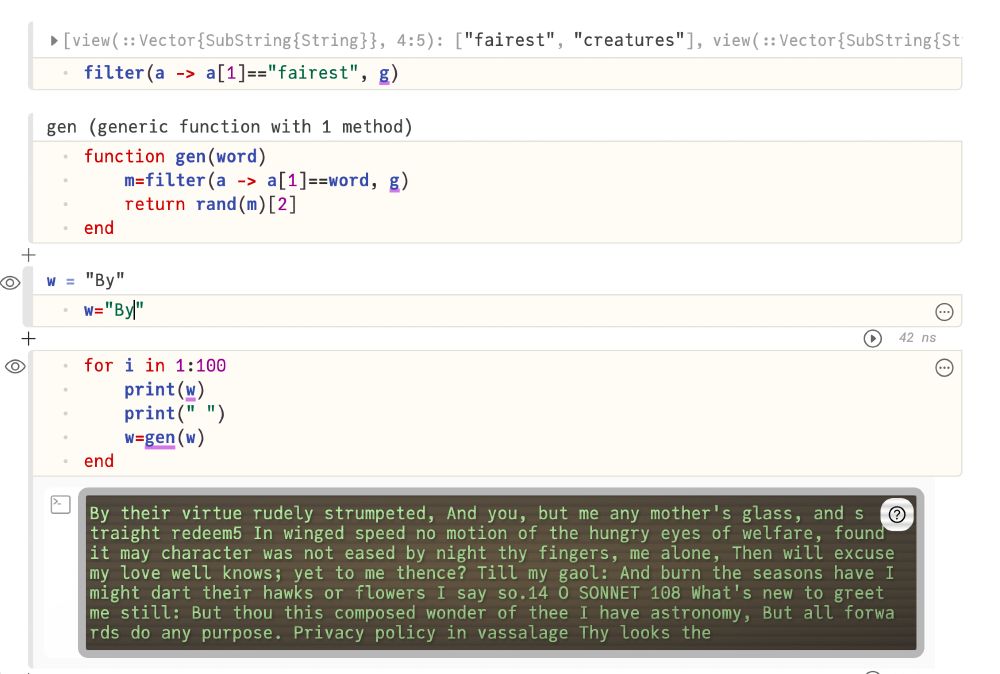Does any scientist on here think the Royal Society's decision to keep Musk as a Fellow was the right one? I don't want to start an argument, but am just genuinely curious what the arguments pro would be.
01.10.2025 19:56 — 👍 56 🔁 15 💬 16 📌 0
On 15th Sept, billionaire & Royal Society fellow Elon Musk called for political & interethnic violence, to pre-empt (ie, begin) a civil war. ("Whether you choose violence or not, violence is coming to you. You either fight back or you die."). A fortnight later, the Society expresses its disapproval
01.10.2025 17:35 — 👍 182 🔁 70 💬 14 📌 7

2025-09_FrostGroupPhDAdverts
September 2025 Frost group PhD adverts Overview / TL;DR Introduction The Frost Research Group Motivation / Philosophy Eligibility Funding Notes How to apply Project 1: Machine learning and computati...
I'm recruiting PhD students (Imperial Chemistry), for a >Jan 2026 start.
1) Designing antimicrobial peptides with machine learning and computational chemistry approaches
2) Machine learning surrogate quantum mechanical models (particularly Tight-binding and PPP)
docs.google.com/document/d/1...
22.09.2025 13:51 — 👍 5 🔁 2 💬 0 📌 0

hpc-bin/gnuplot_terminal at master · Frost-group/hpc-bin
Jarv's files from the HPC ~/bin. Contribute to Frost-group/hpc-bin development by creating an account on GitHub.
Maybe the boring old way to do it via a script is more sensible actually; then you have a script which generates the figure, can check into version control etc. github.com/Frost-group/...
12.09.2025 11:17 — 👍 0 🔁 0 💬 0 📌 0

Plotting a figure within gnuplot to the png terminal, and displaying inline via a piped version of kitty's icat.
Gnuplot with image terminal support sort of works. But you get lots of weird unhappiness with detecting / outputting.
I've only just discovered the ability to pipe within `set output "|kitten icat --stdin" `, usually when I do this I output to a png and then display. But interactive would be nicer!
10.09.2025 23:16 — 👍 1 🔁 0 💬 1 📌 0
Hah!
09.09.2025 21:09 — 👍 0 🔁 0 💬 0 📌 0
Meet friends... wiggle proteins on a computer... analyse trajectories... (Hopefully become a Bayesian?)
The perfect start to a bio-MD focused PhD!
09.09.2025 10:08 — 👍 2 🔁 0 💬 1 📌 0

#CCPBioSim will be running their annual training week of hands-on workshops in basic biomolecular simulation techniques from the 13th-17th October, in Sheffield.
For more details, visit www.ccpbiosim.ac.uk/training2025
The registration link there will open shortly! #compchem
29.08.2025 07:46 — 👍 6 🔁 2 💬 0 📌 2
Off in which way? I thought he had resolved some of the Messier-objects as galaxies, which are of the order mega-light-years away?
20.08.2025 21:53 — 👍 1 🔁 0 💬 1 📌 0
No, I don't think this is true - the kites support the weight, but only by adding to the strain (from right to left in the comic).
So once you have N kites, you need a string which is N times stronger than the one for the first kite.
29.07.2025 21:53 — 👍 2 🔁 0 💬 1 📌 0
Doesn't this have the same problem as constructing a space elevator, in that as you add more kites, your string needs to get stronger (and therefore thicker/heavier) to take the strain?
29.07.2025 21:07 — 👍 1 🔁 0 💬 2 📌 0

For #compchem tweeps, an end of an era - ccl.net will shut down
My first post on the list ~ 27 years ago started me down the path of QM and then comp chem
09.07.2025 02:16 — 👍 11 🔁 2 💬 1 📌 0
Really nice long-form post on how the ML architecture AND the hardware (accelerators, GPUs and TPUs) evolved together.
I think it's always very important in science to be reflective on where how the technology (i.e. hardware) and science (i.e. software) develop in tandem, often as a tick-tock.
03.07.2025 09:38 — 👍 1 🔁 0 💬 0 📌 0
Introduction – Gaston.jl
Version 2.0 of Gaston, a Julia package for plotting using gnuplot, has been released: mbaz.github.io/Gaston.jl/v2/
#JuliaLang #gnuplot
01.07.2025 14:01 — 👍 6 🔁 1 💬 2 📌 0
Is there a change-log anywhere? Why the changes to the API?
03.07.2025 08:35 — 👍 1 🔁 0 💬 1 📌 0
Mainly I think they need a lot of scaffolding and modelling: book clubs, journal clubs, frequented by more senior scientists.
I have a smorgasbord of links to different useful things I've found over the years in my Group guide.
e.g.
www.sciencemag.org/careers/2016...
nesslabs.com/feynman-tech...
11.06.2025 09:52 — 👍 3 🔁 0 💬 0 📌 0
WONDERFUL!
(But how is your coffee machine & breakout space? Always my favourite aspect of a CECAM conference!)
03.06.2025 18:28 — 👍 0 🔁 0 💬 0 📌 0
I think an UG Comp Chem course based in writing bits of code (maybe using PySCF or similar as a backend & to calculate all the fiddly integrals) would be really excellent and lead to great learning outcomes.
(Just don't tell my HoD or they might make me teach it!)
28.05.2025 14:31 — 👍 2 🔁 0 💬 1 📌 0
Computational Physics 2nd Edition | Cambridge University Press & Assessment
Probably not this one either, but Thijssen's book on "Computational Physics" is really on computational condensed matter, and you write an atom HF and DFT code, and LAPW method for solids, then MC, and (PI)MD. I really rate it.
Fortran codes provided by the author: www.cambridge.org/gb/universit...
28.05.2025 14:29 — 👍 2 🔁 0 💬 3 📌 0
Here's a free link to the article if anyone is interested. It's a very depressing read: archive.ph/2025.05.07-1...
09.05.2025 16:07 — 👍 6 🔁 2 💬 2 📌 1
I could not resist adding character-level 2-gram and 3-gram generators. (Not much extra effort at all...)
Quite impressive really!
"Happecay;
Fors' flove."
"How, agaze sed,
Calst me
And speandst be of see:"
jarvist.github.io/ijulia-noteb...
06.05.2025 18:37 — 👍 0 🔁 0 💬 0 📌 0
jarvist.github.io/ijulia-noteb...
Online Julia Pluto notebook: you should be able to read the code, run it on Binder / download to play yourself.
02.05.2025 12:14 — 👍 0 🔁 0 💬 2 📌 0


In many ways it is easier to write a program than to explain clearly to a person...
01.05.2025 23:30 — 👍 0 🔁 0 💬 1 📌 0

Snippet of a Julia notebook.
Generated Sonnet text is: By their virtue rudely strumpeted, And you, but me any mother's glass, and straight redeem5 In winged speed no motion of the hungry eyes of welfare, found it may character was not eased by night thy fingers, me alone, Then will excuse my love well knows; yet to me thence? Till my gaol: And burn the seasons have I might dart their hawks or flowers I say so.14 O SONNET 108 What's new to greet me still: But thou this composed wonder of thee I have astronomy, But all forwards do any purpose. Privacy policy in vassalage Thy looks the
I'm off to a local high-school tomorrow to give an access / interested in science / Imperial talk.
I wanted to explain that ChatGPT wasn't magic, so am going to get the students to make a 2-gram word 'generative model' out of sampling Shakespeare sonnets, BY HAND.
It works really well!
01.05.2025 23:27 — 👍 7 🔁 1 💬 1 📌 0
But in truth this is a totally false dichotomy.
Without computational theory you cannot interpret the experiments (or even, figure out what you've made); without experiments we have no empirical physical reality to ground our calculations in.
01.05.2025 10:52 — 👍 4 🔁 0 💬 1 📌 0
Pah! More like:
Output: Actual predictions based on actual knowledge of where actual atoms are.
vs.
Output: Brick dust! Did you buy the 99% or 99.9% stuff from Sigma Aldrich? Is it even crystalline? Anyone got a spare £bn synchrotron and neutron beam so we try and figure out what we made?
01.05.2025 10:49 — 👍 4 🔁 0 💬 1 📌 0
Part 1 was superb, a lot of plain-speaking and clarity about what's happening. I've been looking forward to listening to part 2
06.04.2025 15:17 — 👍 9 🔁 2 💬 1 📌 0
Not just trajectories: the whole reproducible workflow, including computer readable forcefields, input files, and analysis methods.
I've come back to MD after being away for 15 years, and it's terrifying how behind electronic structure the community is.
05.04.2025 08:57 — 👍 2 🔁 0 💬 0 📌 0
UK trade union for academics, lecturers, trainers, researchers and professional services staff in further education, higher education, prison education, and adult and community education.
Chemical Physics @ CU Boulder
Bringing unparalleled #accuracy and precision to #drugdiscovery and design, using #quantumphysics to develop life-changing treatments for major diseases.
Visit our website: https://www.qubit-pharmaceuticals.com/
Assistant Prof. at Malmö University; modelling of intrinsically disordered regions, membrane-associated proteins, and biomolecular condensates. He/him
Julia is a high-level, dynamic programming language built for technical computing.
Official Bluesky account of the Julia Language Project
#JuliaLang
Computational Quantum Physicist - EPFL Lausanne, Switzerland
Author.
Prof of Math Bio and Public Engagement.
Member of Independent Sage since October 2020.
@Kit_Yates_Maths on twitter
Books -
Math(s) of Life and Death
How to Expect the Unexpected
Get them here: https://tinyurl.com/37rx2yuv
He/Him
Chief Scientist at Quantinuum, ex Oxford Professor, author of Picturing Quantum Processes & Quantum in Pictures. Also, composer/musician at Black Tish, inventor of Quantum Guitar, playing duets with orchestral organ.
Conference series dedicated to areas of tension in #attoscience. #AttoFridays seminar series since spring 2021.
For more info see https://www.quantumbattles.com/
I write about medicinal and computational chemistry and drug discovery with a sprinkling of history. Blog at medchemash.substack.com.
🤓: Applied Math & Biomed Engineer; Research Affl @usask.ca
🔎: Health informatics, public health, applied cat. theory & open source/science
📝: EN/ES/DE/AR
🌐: Blog @ https://jacobzelko.com
📹: Twitch @ https://www.twitch.tv/thecedarprince
Chemist; bismuth enthusiast; slow runner; designer of molecules for quantum applications; Department of Chemistry MIT; assoc. editor JACS
Professor and Chair of WashU Chemistry. I’m a researcher, but I’m a #MentorFirst. Author of Labwork to Leadership.
The myths of Ancient Greece still echo and shape the modern world. This is their story.
APPLE https://podcasts.apple.com/us/podcast/alex-andreous-podyssey/id1798575126
SPOTIFY https://open.spotify.com/show/2x7cD3HjkOyOKTF4YT5Goy?si=657111fc0e544740
Columnist and feature writer at the Financial Times.
👩🏼💻 https://www.ft.com/jemima-kelly
Probably at a Stoke Newington drinks party.
Prof of Public Engagement in Science, Uni of Birmingham; anatomist, author, broadcaster; vice President of Humanists UK. All views my own.
Writer. Books include A Crack in Everything, Breakthrough, The Ascent of Gravity, Infinity in the Palm of Your Hand, Quantum Theory Cannot Hurt You & Solar System for iPad. See www.marcuschown.com
🇲🇹 📍🇦🇹 // Quantum Physics PhD student
thinking thermodynamically @quitphysics.info
// Founder @qalypsoschool
// Startups, music and running elsewhere in spacetime.
Theory division of TU Wien's Atominstitut, encompassing groups for Quantum Info, Thermo, Foundations, Computing, Optics, Many-Body physics and more! We like open, diverse science + good coffee! Account run by @tomrivlin.com
https://www.quitphysics.info/








